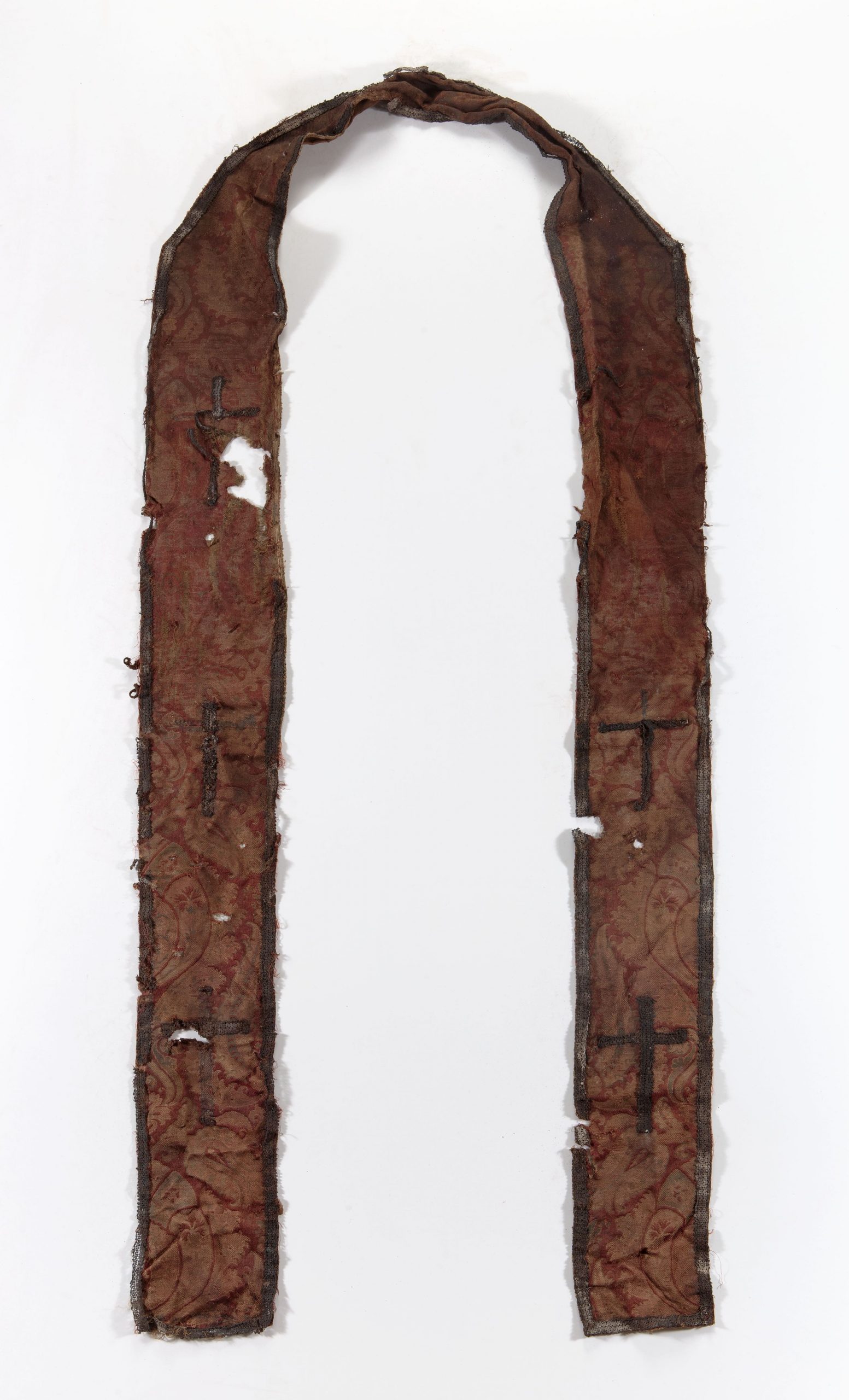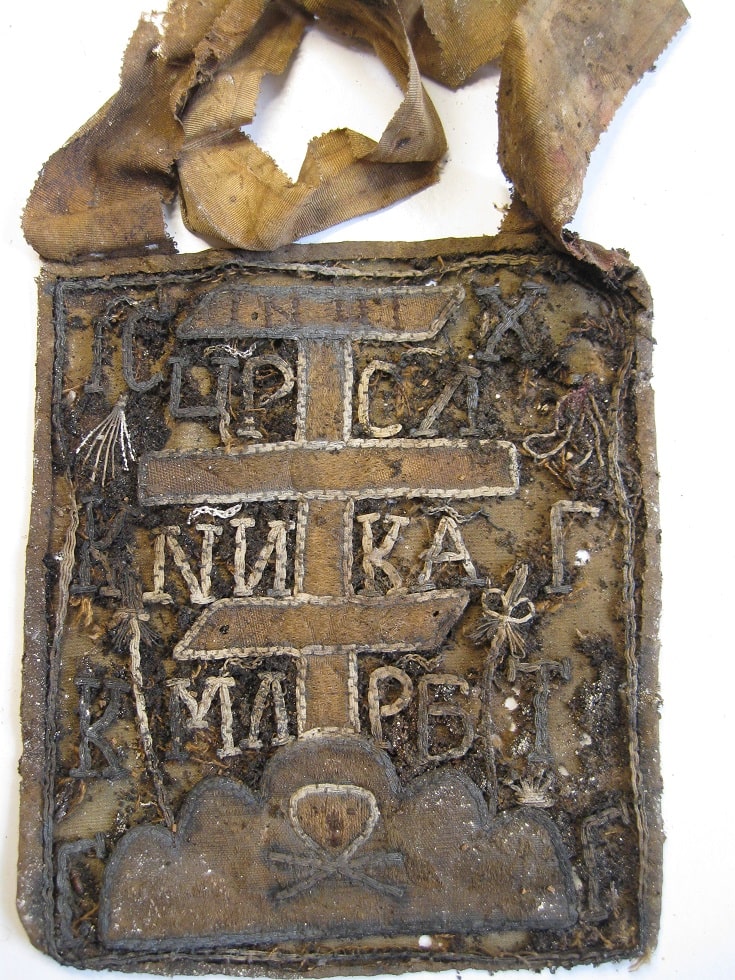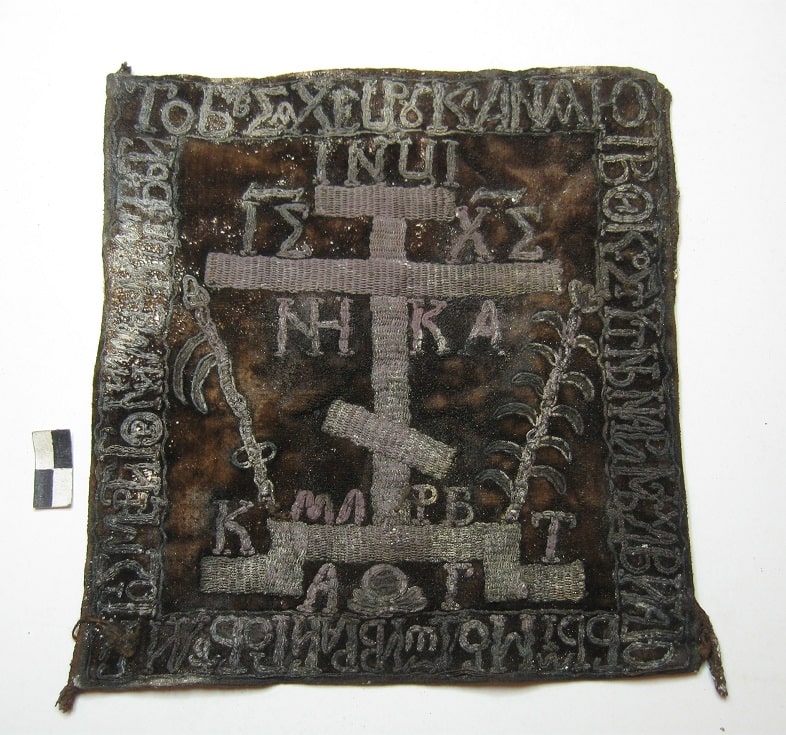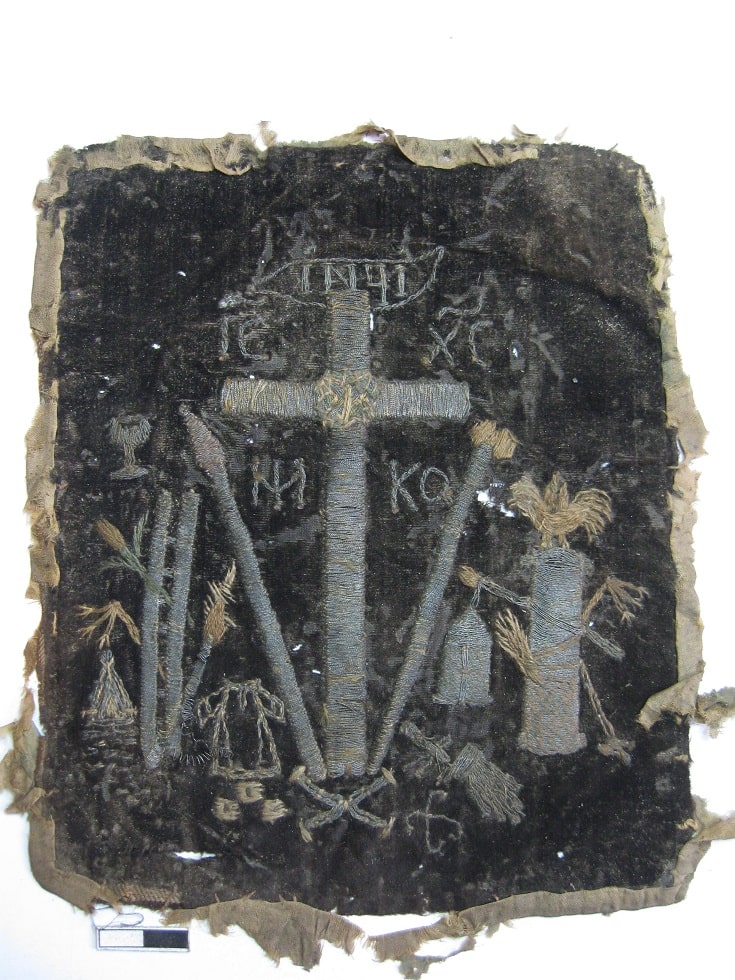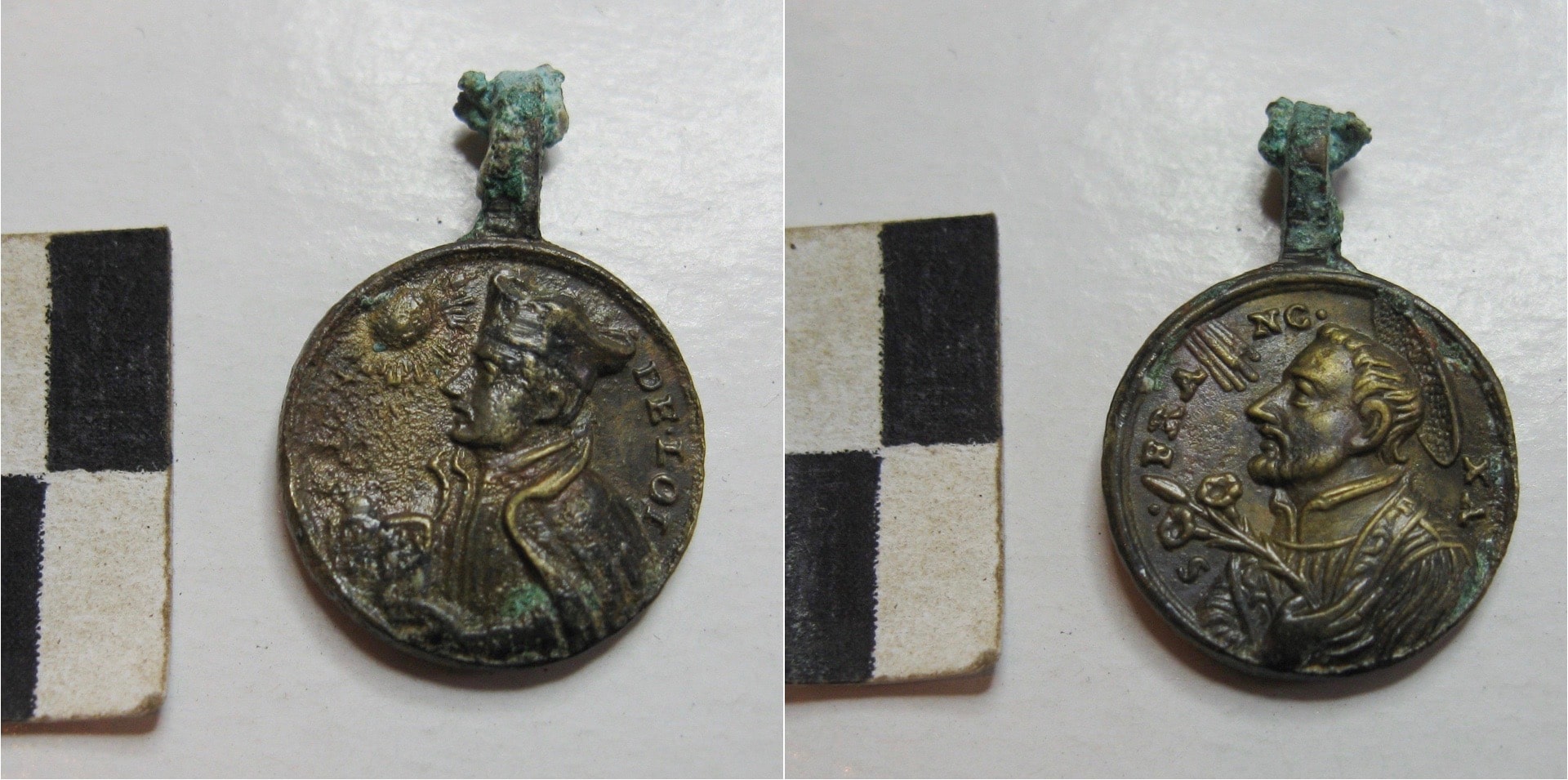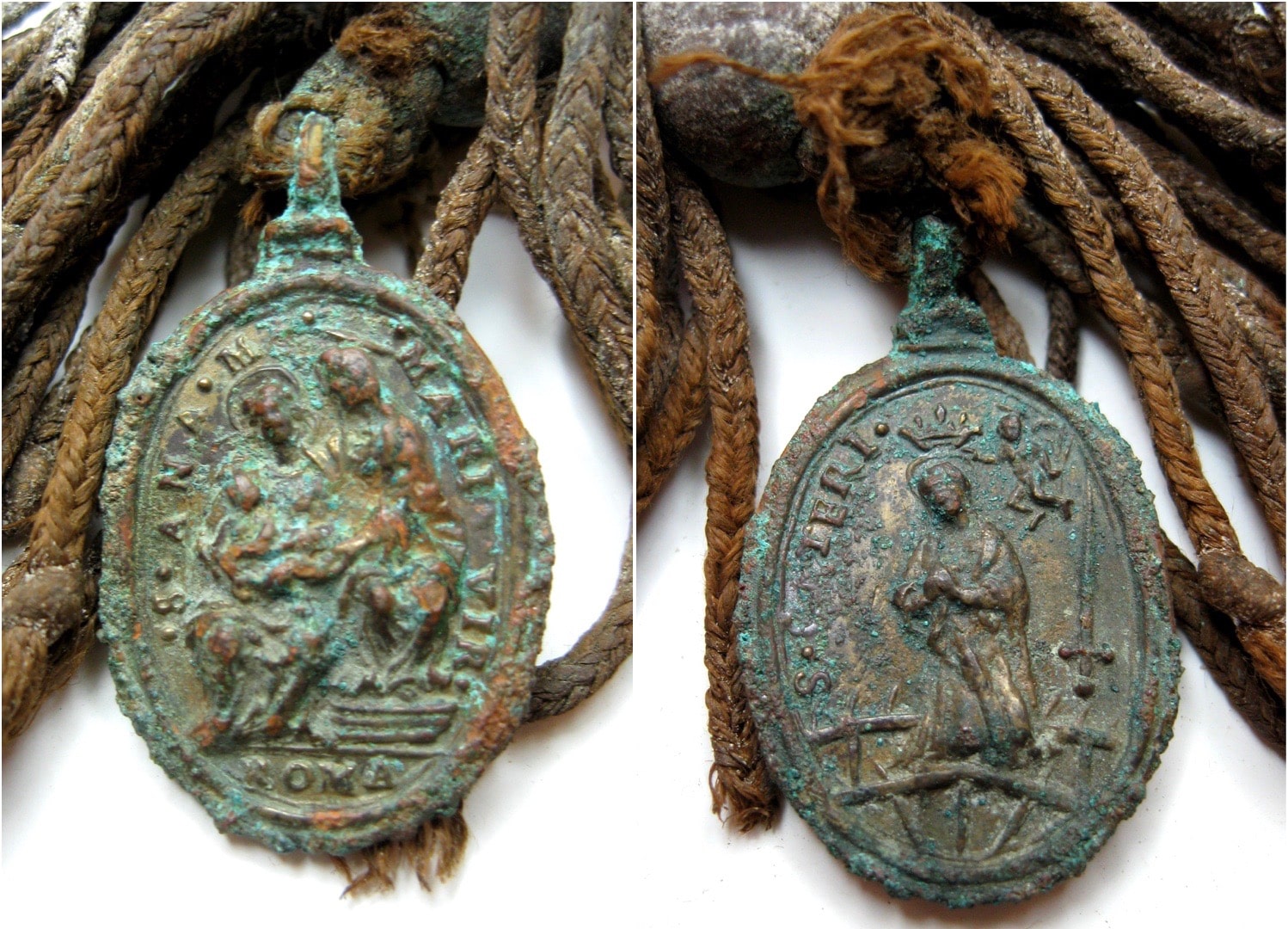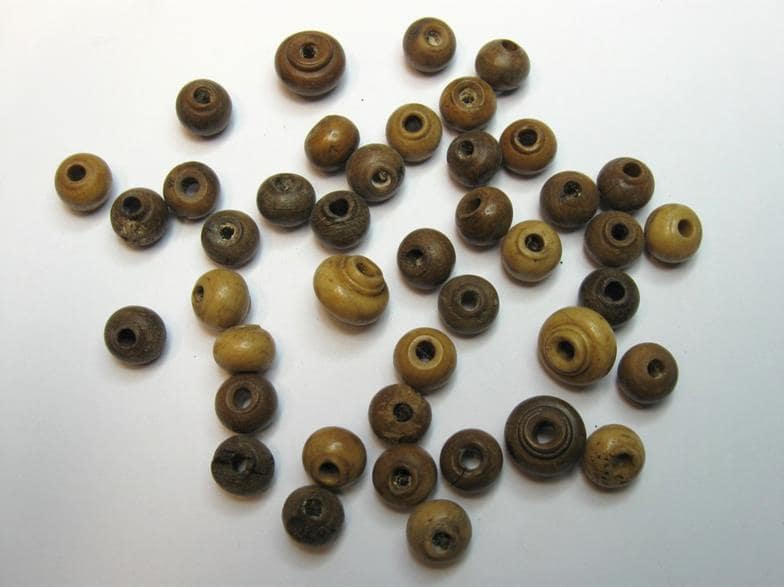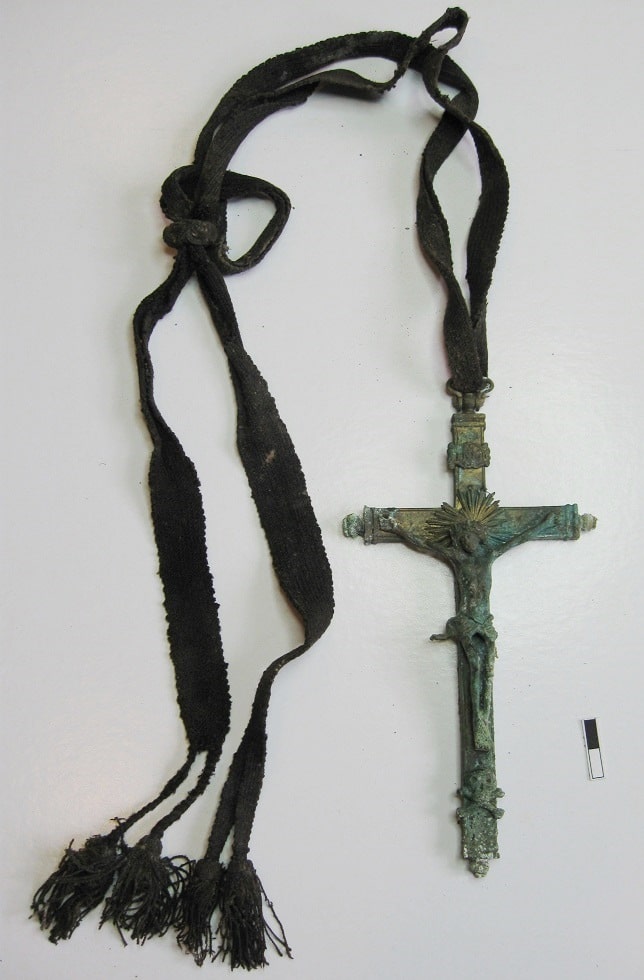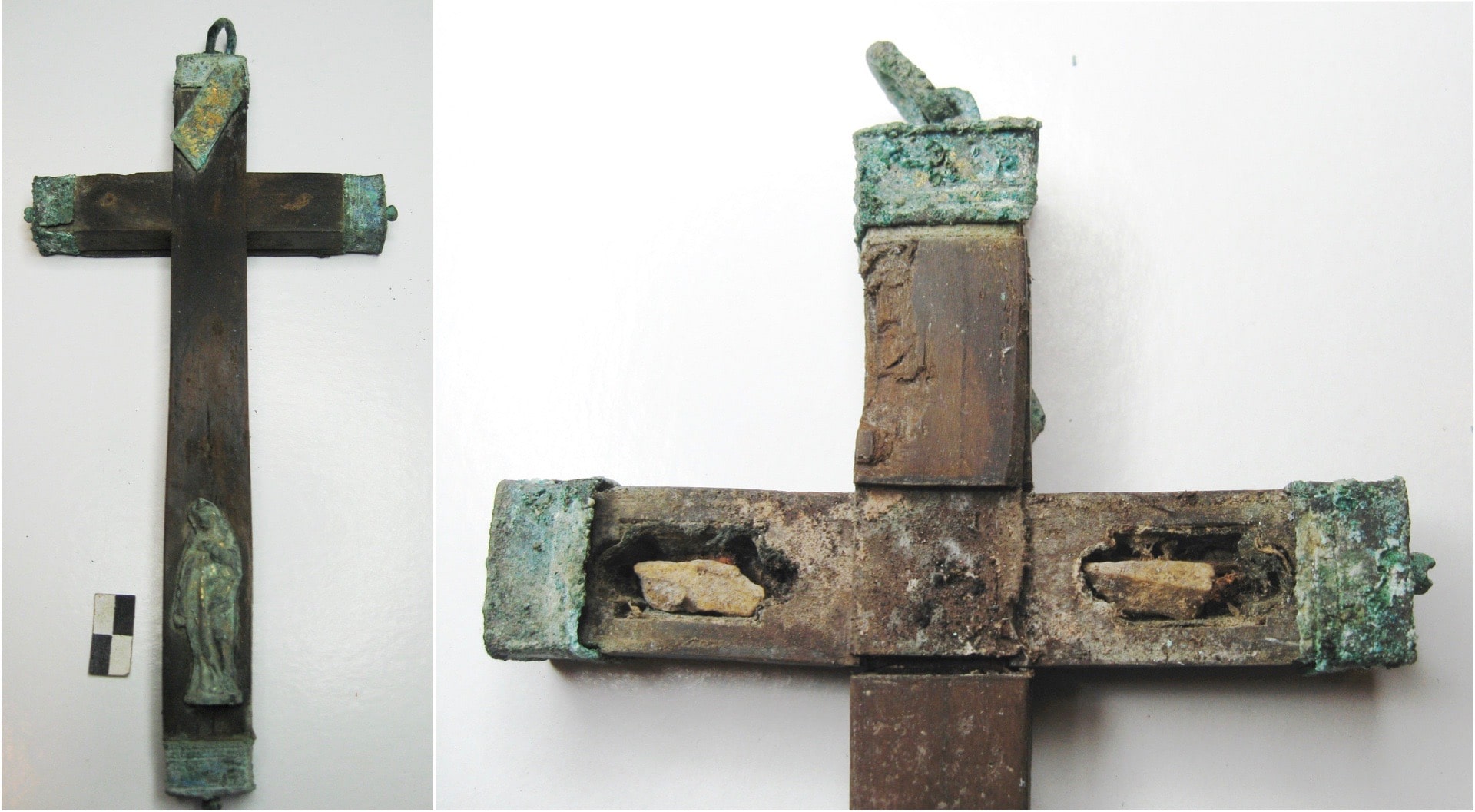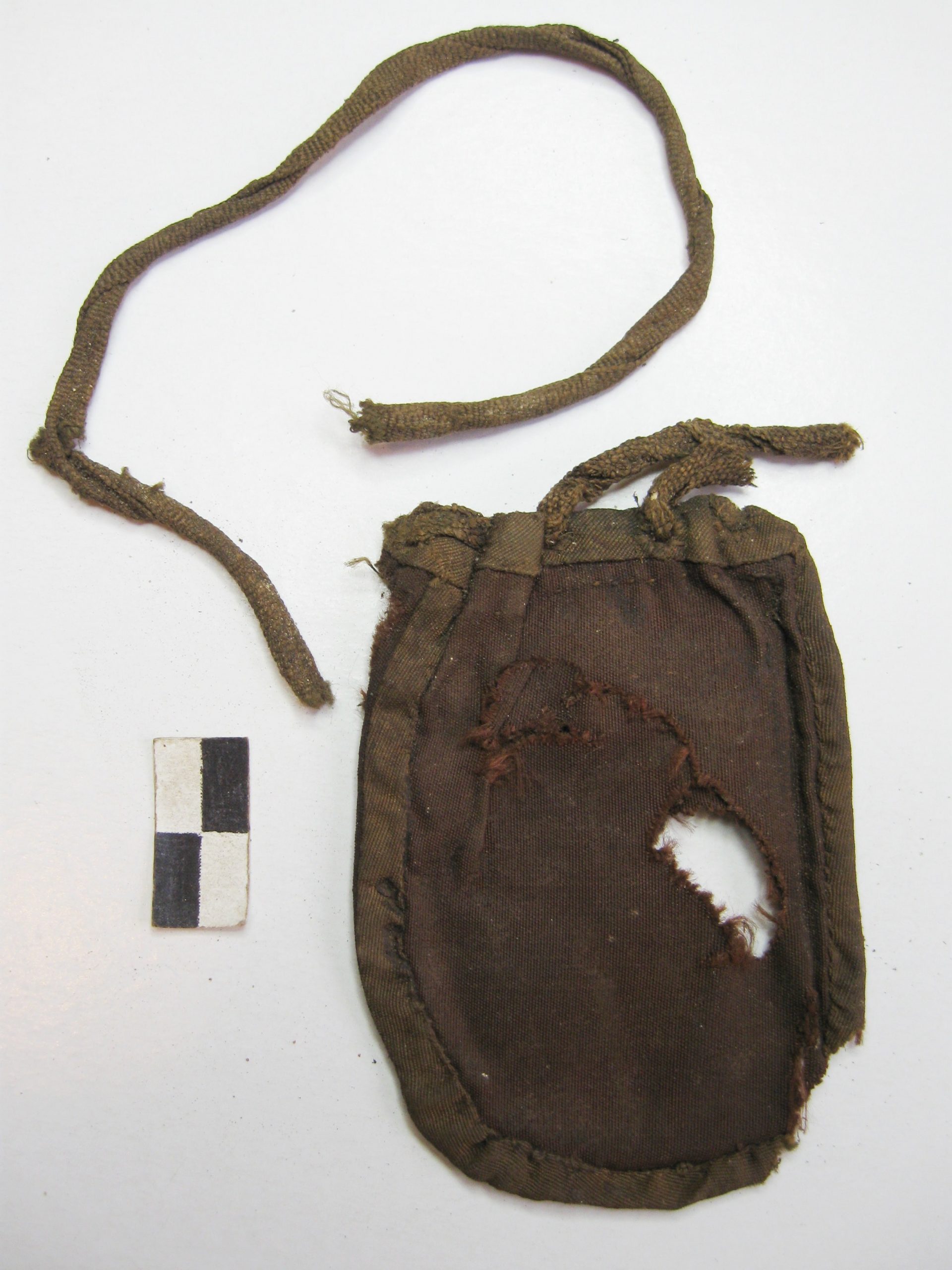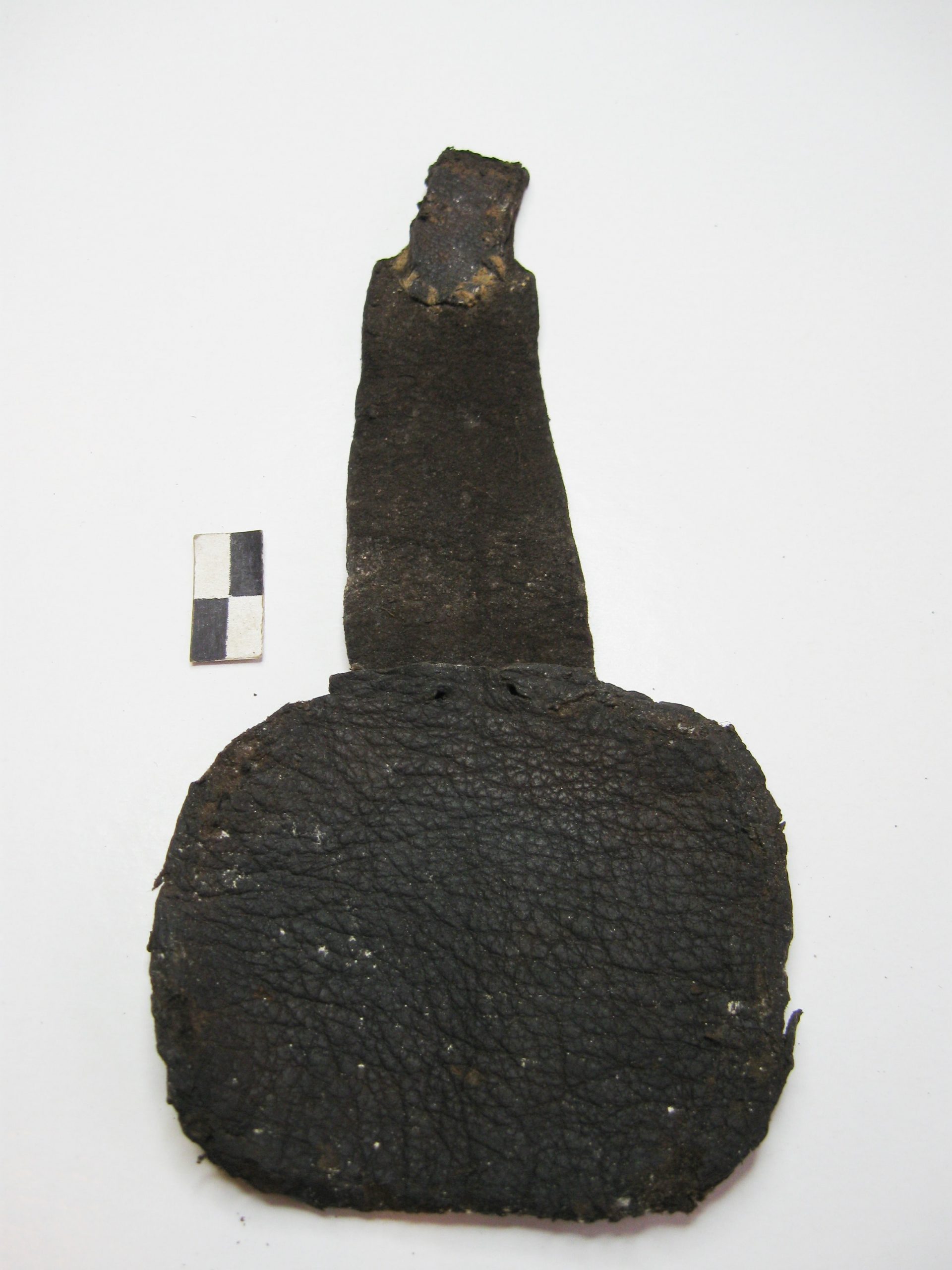In the crypt of Holy Trinity Church, which researchers investigated through 2015–2016, under the great altar (↑) most of the burials that were found were of Basilian monks. Unfortunately, in the historical texts very little is mentioned about the rite of their burial. So, the only thing known about the death of priest-monk Ignatius Morscztyn is that in 1775 the tomb was purchased for 10 złoty.1LVIA, f. 1178, ap. 1, b. 1, l. 119v. We know another detail about the burial of the superior of the monastery, Hilarion Karpiński: in 1773 paint was purchased for one złot “to paint his coffin”.2Ibid., l. 78. However, regarding his burial clothes, the appearance of the tomb, the items placed in it, etc., the narrative sources are, as usual, silent. In the absence of such archival materials, the items found in the coffin can tell more.
The fragments of clothing found, though very little was preserved, allow us to confirm that they buried monks in their daily habit. The habit of the Basilian monks was long, of a dark colour, with a standing collar and a hood with two long strips of double-breasted fabric, which fell on the chest. Such a thin, wool hood of a brown color and a hat of brown velvet was found in four coffins, including that of Brother Inocenty Janiszewski.
The epitrachelion (Greek Επιτραχηλιον – “around the neck”), is the liturgical vestment worn by Basilian priests and required whenever a priest is conducting an Orthodox service. It had the form of a long liturgical stole which is placed around the shoulders and its ends go over the chest. In each half, three pairs of crosses were sewn, which symbolized the six sacraments that a priest can celebrate.3Мария А. Маханько, Ю. Г. Гриднева, “Епитрахиль”, in: Православнaя энциклопедия, т. 18: Египет Древний-Ефес, Москва: Церковно-научный центр „Православная энциклопедия“, 2013, с. 535–542. One more cross, a seventh one, embroidered in the middle of the stole, signified the burden of priestly obligations, accepted in a desire to serve the Lord. During the investigation, five priests were found buried with epitrachelions. Among them, a very long epitrachelion stands out (279 cm), sewn of red jacquard cloth with a motif of yellowish and green plants [1].
Paramandyas (Greek Παραμανδύας – “addition to the mantiya”) – part of the liturgical garb of Eastern rite monks, a religious element which was to remind the monk about the burden he had taken on himself of following Christ. Basilians wore the paramandyas under their clothes, on the neck, from where it lay on the chest. In the crypt, researchers counted 36 paramandyas or their fragments [2, 3, 4]. In the majority of them, the same or a similar theme was repeated: in the center of a rectangular cloth is sewn or set by an application technique the cross of Golgotha with a skull and bones forming a cross under them, and from both sides of the cross is depicted the spear of Longinus, a stick with a sponge, instruments of the tortures of Christ (a whip, ladder, pincers, and hammer), the cloth of St. Veronica or an abbreviation in the Greek or Church Slavonic languages (Church Slavonic “IНЦИ” – “Jesus of Nazareth, King of the Jews”; Greek “IC ХС НИ КА” – “Jesus Christ Conquers”; Church Slavonic “ЦР СЛ” or “СР СЛ” – “The King of Glory”; Church Slavonic “МЛ РБ” – “was crucified on the Place of the Skull”; “К Т” – “the spear and reed [of Longinus]”; “Г Г” – “Golgotha Hill”, etc.). On some paramandyas there are crosses in the Latin tradition or Latin inscriptions. For example, on one of them are sewn the words “VERBO CARO FACTUM EST ET HABITAVIT IN NOBIS” (“And the Word was made flesh and dwelt among us”, John 1:14). Such a variety of paramandyas witnesses to the unity of signs and symbols for confessing the faith in both Christian traditions, Orthodox and Catholic. Perhaps the fact that not only Uniates but also Roman Catholics became Basilians had an influence on this.
Regardless of the single type of theme, all the paramandyas are unique: they are differentiated by the technique of execution, materials for preparation, and by their quality. There is no information available to modern scholars about who sewed the paramandyas. Perhaps it was Basilian nuns who lived nearby, or perhaps female relatives of the monks or craftsmen of the tailors’ guild who visited Holy Trinity Church.
The main attribute of the daily prayer of the residents of the monastery was the prayer beads. Their parts, seeds and medallions, were noticed in 13 coffins. The themes of these medallions are again fairly eloquent; they witness devotion to both Catholic and also Orthodox saints. On one of the medallions (which lay in the coffin of Fr. Florianus Walicki) Jesuit saints were depicted – St. Ignatius Loyola and St. Francis Xavier [5]. On the second was St. Benedict of Nursia (he holds a cup with a snake in his hand), the cross of St. Benedict (he protected against temptations, evil spirits, and plague), and an abbreviation that signifies a short prayer to this saint. On the third we see the Most Pure Virgin Mary, St. Anne, the inscriptions “S[ANCTA] AN[N]A M[ATER] MARI[AE] VIR[GINIS]” and “ROMA” on one side, and on the other the patron of philosophers, students, and schools, St. Catherine of Alexandria, with a sword and the wheel of her tortures [6]. This medallion was prepared in Italy. For the prayer beads, seeds from a tree or bones were used [7].
Another important sign for clergy and monks was the cross, a symbol of the crucifixion and resurrection of Christ. Twelve metal neck crosses were found, nine of which were in the Latin tradition. In addition, some of them were fairly large, 18 cm in length [8]. In the coffin of Gennadius Laudanski-Paszkowicz, consultor of the Basilian Order, a wooden neck-pectoral cross, 20.5 cm long, was preserved, on the cross of which were relics, pieces of the bones (?) of saints [9].
In a few of the coffins, near the breasts of the deceased were bags [10, 11]. It is most likely that in these the monks held items important for them. In particular, inside a sewn silk case was a metal, double Spain Caravaca cross.
In eight coffins, a brick was placed which, clearly, it is worthwhile connecting with the tradition of burial characteristic for Eastern monasticism. The custom to place it below the head of the deceased can be understood as witnessing to ascetic life or as a reference to an episode described in the Old Testament, when Jacob slept near Bethel, placing a stone under his head (Genesis 28:10-22); in this way, through the stone or the brick the deceased is connected with the patriarch.4Леонид А. Беляев, “Каменные „подушки“ монашеских погребений и их ветхозаветный прототип”, Российская археология, 2005, т. 4, с. 171–175. They maintained this custom, possibly to the very end of the 18th century (↑) (↑).
Vytautė Lukšėnienė
Išnašos:
| 1. | ↑ | LVIA, f. 1178, ap. 1, b. 1, l. 119v. |
|---|---|---|
| 2. | ↑ | Ibid., l. 78. |
| 3. | ↑ | Мария А. Маханько, Ю. Г. Гриднева, “Епитрахиль”, in: Православнaя энциклопедия, т. 18: Египет Древний-Ефес, Москва: Церковно-научный центр „Православная энциклопедия“, 2013, с. 535–542. |
| 4. | ↑ | Леонид А. Беляев, “Каменные „подушки“ монашеских погребений и их ветхозаветный прототип”, Российская археология, 2005, т. 4, с. 171–175. |
